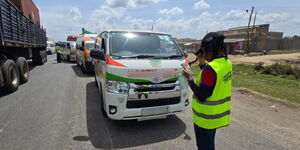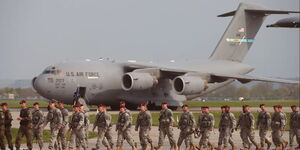The National Transport and Safety Authority (NTSA) on Wednesday moved to seal loopholes used by car importers who evade necessary inspection services.
In the National Road Safety Action Plan for the period between 2023-2027, NTSA faulted car owners for failing to take cars for inspection. However, it also apportioned blame to the government, stating that the government lacks an adequate number of test centres.
The authority also emphasised the importance of controlling safety standards for both new and old vehicles entering the country, including the equipment used, such as boda boda helmets.
To ensure a seamless and effective process, NTSA will implement a new vehicle safety standards program, periodic vehicle testing reform, and vehicle body-building regulation.
"Standards are also in place for vehicle modification, but truck chassis imported as second-hand vehicles from Japan, then converted into public transport vehicles by local vehicle body builders, often provide insufficient occupant protection in the result of a crash. Given their vital role in Kenya’s transport system, it is critical that this issue is addressed," reads part of the statement.
However, the laid-out actions will require considerable investment in developing a sustainable operational model supported by appropriate capacity building in automotive safety and compliance processes.
NTSA will partner with KEBS to introduce modern vehicle safety regulations to achieve better compliance with current roadworthiness and vehicle modification standards under the Traffic Act, the NTSA Act, and the Standards Act.
The Vehicle Safety Standards Program
NTSA revealed that by 2030, 100 per cent of all new motor vehicles being imported into the country will have to meet at least seven of the eight priority United Nations vehicle safety standards.
Some of the standards include frontal impact protection (R94), side impact protection (R95), electronic stability control (R140), pedestrian front protection (R127), seat belts (R14), seat belt anchorages (R16), child restraints (R129) and motorcycle anti-locking braking systems (R78).
"This reform program needs to consider new and used vehicles and the sequencing of the reform program to best achieve the 2030 national road safety target," the authority stated.
Periodic Vehicle Testing Program
NTSA will target public service vehicles and commercial cars in its periodic vehicle testing program. Some of the factors to be addressed will be the vehicles' roadworthiness, including brakes, tires, lights, and seatbelts.
Other factors are how testing services will be updated and monitored and regulation of the market to ensure cost-effective regulatory activity.
"Private sector garages will need to be licensed and closely regulated by the NTSA to undertake inspections and not allowed to offer repair services," NTSA stated.
Vehicle Body Building Regulation
To address the issue of modifying cars, NTSA plans to implement clear construction standards to be observed by body-building enterprises.
All bodybuilding enterprises will be registered through the set criteria, the enterprise will be regulated, and tough penalties shall be set to prevent the bodybuilders from defying the set standards.












